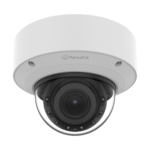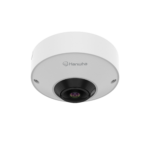2024.04.03
Electronic Security Technology – A Powerful Ally in Compliance

Below, Lloyd Taylor, Vice President of Sales at Hanwha Vision America, details how our camera solutions can help companies not just enhance safety and customer experiences, but also serve as valuable tools to help simplify compliance with industry regulations and data protection laws.
Harnessing the power of electronic security technology for compliance
In the realm of security, the integration of electronic security technology is a beacon of innovation and efficiency. The potential of these technologies extends far beyond mere surveillance or access control; they are instrumental in navigating the complex waters of compliance.
For security practitioners, the strategic deployment of electronic security technology is not just a matter of enhancing safety – it’s a pivotal approach to overcoming and avoiding compliance challenges.

1. Data Protection and Privacy Compliance
Modern electronic security systems often come equipped with advanced encryption and robust cybersecurity measures. This ensures sensitive data is protected in accordance with ever-changing privacy laws and regulations. This is especially crucial in industries where data protection is paramount, such as healthcare or finance.
2. Effortless Compliance Reporting
Imagine drastically reducing the time spent on compliance audits! Electronic security systems with comprehensive logging and reporting features can automatically generate reports on security incidents, access control logs, and even surveillance footage. This allows security professionals to effortlessly demonstrate compliance with regulatory requirements.
3. Access Control for Restricted Areas
Electronic access control systems offer a level of control essential for compliance. They can be configured to enforce strict policies regarding who can access sensitive areas, when they can access them, and under what conditions. This is crucial for adhering to regulations that mandate restricted access to specific locations or data.
4. Real-Time Monitoring and Alerts
Proactive security is key, and electronic security systems with real-time surveillance and monitoring capabilities empower security teams to detect and respond to potential compliance breaches as they happen. This not only enhances overall security but also ensures swift corrective action can be taken in the event of any deviation from compliance standards.
5. Integration for a Holistic Approach
The ability to integrate electronic security systems with other operational technologies enables a holistic approach to compliance. For instance, integrating security systems with HR databases can automate the process of granting or revoking access based on employee status. This ensures compliance with internal policies and regulatory standards, streamlining the process significantly.
The implementation of electronic security solutions offers a dual advantage: enhancing the overall security posture while simultaneously streamlining compliance processes. This forward-thinking approach not only positions organizations for compliance today but also prepares them for the ever-changing regulatory landscapes of tomorrow.
As we navigate the complexities of security and compliance, strategically applied electronic security technology emerges as a crucial ally. This approach embodies the principle of “compliance by design,” ensuring that security advancements are made with the highest standards of compliance in mind. By embracing electronic security solutions, organizations can achieve a future where robust security and seamless compliance go hand-in-hand.


